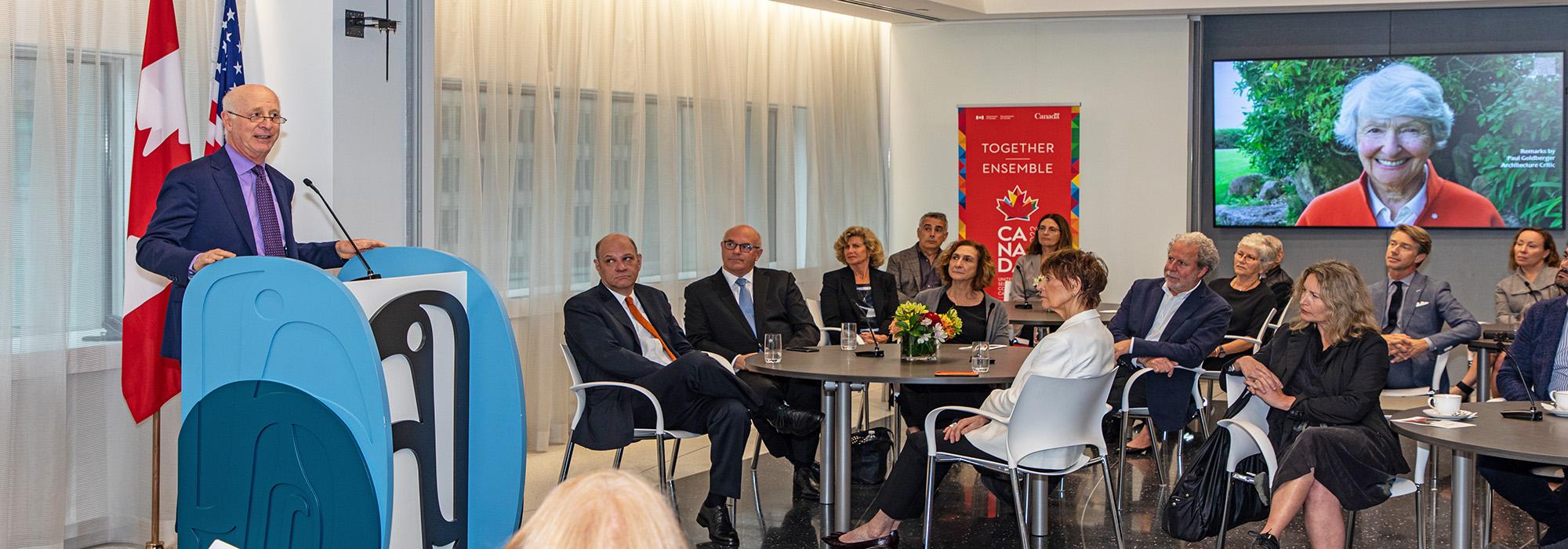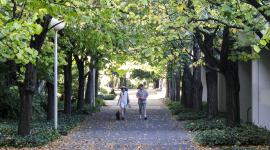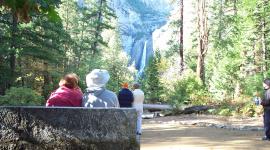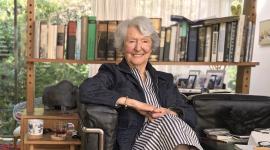Goldberger’s Keynote Strikes Perfect Chord for New Oberlander Prize
Architecture critic and author Paul Goldberger gave a rousing address to an audience gathered at the Canadian Consulate in New York City on October 1, 2019, when the Cornelia Hahn Oberlander International Landscape Architecture Prize was officially announced to the world. Below are Golberger’s remarks:
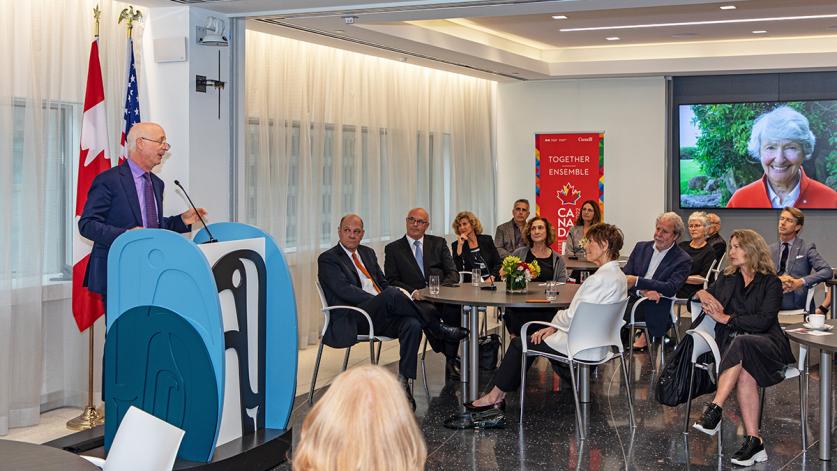
The establishment of the Cornelia Hahn Oberlander International Landscape Architecture Prize is obviously a meaningful moment in the evolution of landscape architecture, the first prize of such magnitude in this essential field. But even more important than its implications for the field of landscape architecture is what this prize means for landscape and architecture, and I am not just playing with words here. Landscape and architecture are two worlds that too often exist independently of one another, and I think it is no exaggeration to say that one of the messages of Cornelia Oberlander’s extraordinary career has been to say that these fields can only benefit by becoming more connected. She is, after all, a landscape architect who studied housing, who studied cities, whose life was deeply intertwined with the growing presence of the modern movement in the United States and then in Canada, and whose entire career has been a rebuke to those who might be so foolhardy as to think that the design of landscape is mainly a matter of selecting plants, or of adding some sort of frill to architecture, a bit of green to soften it the way pieces of sculpture were often brought in in the hope of distracting people from bad architecture. Indeed, she would never tolerate the notion that landscape could be viewed merely as some sort of antidote to architecture.
Landscape, to Cornelia Oberlander, is not a medicine you apply to architecture to make it better, but an integral part of the art of building, the art of making places. She has always known that landscape is a discipline that speaks to all that goes into the making of the cityscape, and of the deep and essential connections between landscape and cityscape—that landscape needs cityscape, that cityscape needs landscape. So as we celebrate Cornelia Hahn Oberlander’s remarkable career with this prize, the Cultural Landscape Foundation is also making a statement about the essential interrelationship of landscape and cityscape, of town and country, of rus in urbe.
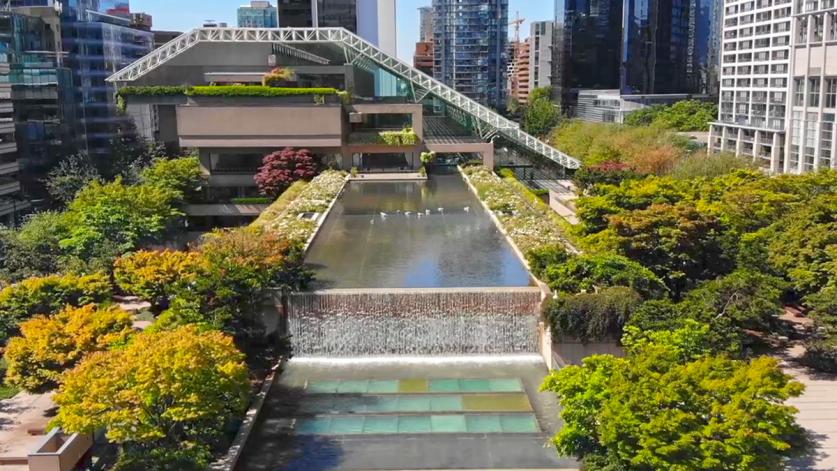
I think there is another message to this prize, and that is of the importance of the public realm. I say this not to diminish the importance of great landscape achievements in the private realm, of which there are many, often of breathtaking beauty. Although some of them, many of them even, are great works of art, private landscapes do relatively little to address the social needs of this moment, whereas landscape in the public realm does this by its very nature. The architecture of a public building sometimes addresses a social need, sometimes not, but the design of a public piece of landscape almost always addresses a social need. Whether it is successful at this is another question, but its very existence, surely, is a testament to belief in the social good.
And if I think about the great design achievements of the past generation in most cities, and certainly in New York, they are not in the making of buildings—of which we’ve done decently but only rarely better than that, and a lot of the time we’ve done far less than decently—no, it is in the making of places, public places, public landscapes, that our time has made its mark. Just to stay in New York, we have added the High Line, Hudson River Park, Brooklyn Bridge Park, and Governor’s Island to the public realm, and each of these is an accomplishment of landscape architecture far more than of architecture. I say this not to single out New York, but only because what has happened here is emblematic of what has happened in so many other places—a recognition, late in coming, that you cannot have a viable city without meaningful public space; that our age’s relentless focus on privatization has come at an enormous price, and that we must begin to push back against it; and that landscape is one of the best tools we have to blunt the impact of another problematic characteristic of this age, which is our insistence on building more and more, bigger and bigger, with scale often forgotten.
It is a paradox that the natural, nature, is often what brings a sense of humanity to the man-made, which often fails to express it. We need nature, in other words, to make the places created by humans actually feel human, or feel right for human beings. I did say a moment ago that landscape should never be considered an antidote to architecture, by which I meant that as a discipline, landscape architecture is a thing unto itself, not an adjunct to the making of buildings, or a way of covering up architects’ mistakes, although in truth, landscape design does indeed have a long and welcome history of mitigating the effect of bad buildings. The ideal, of course, is something that aspires to so much more than that, something more like the ambitious and civilizing partnership of Cornelia Oberlander and Arthur Erickson, where the landscapes and the buildings that they crafted together engaged in dialogue, each unimaginable without the other, and each making the other better.
I do think that the relationship between architecture and landscape has begun to change, however, at least in an urban context. When Frederick Law Olmsted and Calvert Vaux designed Central Park, the architecture of the city was, for all intents and purposes, irrelevant. It was supposed to disappear; the only architecture that mattered were the small structures, many of them follies, that Vaux designed within the park itself. There was no backdrop of urban buildings to play off against the park.
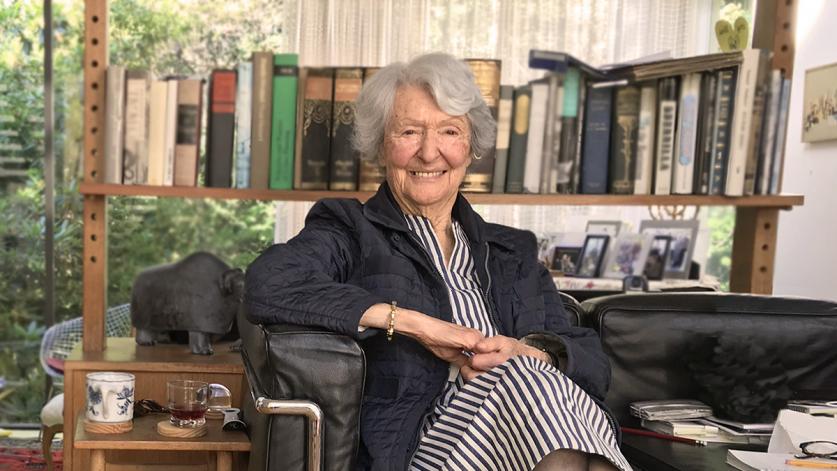
Today, of course, it is different, and the architecture of the city itself is a constant presence within the park, intruding on Olmsted and Vaux’s vision, sometimes benignly, sometimes annoyingly, and sometimes powerfully and beautifully. But whether for good or ill, the visibility of the city from within the park represents some degree of compromise of Olmsted’s vision of rustic escape. Our newer public landscapes, however, often start out with the premise of engagement with the city, not of disengagement from it. Nature is a counterpoint, meant to be a part of the active engagement with the city. We see that surely in the High Line, but also in Brooklyn Bridge Park and Hudson River Park, all of which represent a new form of urbanism—landscapes of engagement, we might call them, not landscapes of escape. It is a new kind of urbanism, in which architecture and landscape are more tightly bound together, and have a more common future, than ever before.
And this brings us back to why it is so appropriate that this prize is named for Cornelia Hahn Oberlander, since her landscapes have always been places of engagement—places of connection, to architecture and to urbanism of course, but even more, to the idea of the public realm. A public building may or may not be of public benefit; a public landscape almost invariably is. We need them more than ever, and I have not even mentioned the other key reason for the urgency of this prize, and the logic of naming it for Cornelia Oberlander, which is climate change, and the issues surrounding sustainability, where she has been a pioneer, leading the way long before it was obvious to everyone how important this is. Her leadership here is yet another reason that this new landscape prize, inspired as it is by Cornelia Oberlander, will help assure that we continue to focus our attention on what landscape architecture can do to shape the public realm, and to make it good.
—Paul Goldberger, October 1, 2019



